Posted by Anjum Andrabi on 14th January 2009
A day-old calf was presented at the veterinary clinic with bilateral corneo-scleral dermoid cysts which were completely occluding the lid opening and rendering the calf blind. The cysts extended from the cornea , partially covering it; and travelling medially fusing with the third eye lid.
A surgical procedure was attempted on the calf with the aim to one, remove as much of the mass of the cyst as possible so as to remove the obstruction to light and second. to peel off the dermal layers containing the follicles as close as possible to the cornea/sclera so as to prevent regrowth of hair follicles. Sutures were placed to promote fusing of the raw tissues with the lower eyelid.
The first four pictures show the extent of the cyst and occlusion due to it
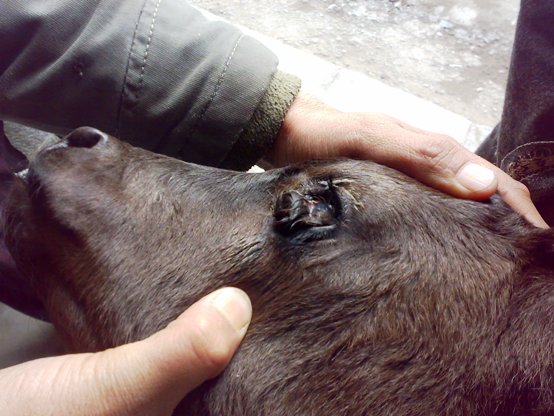
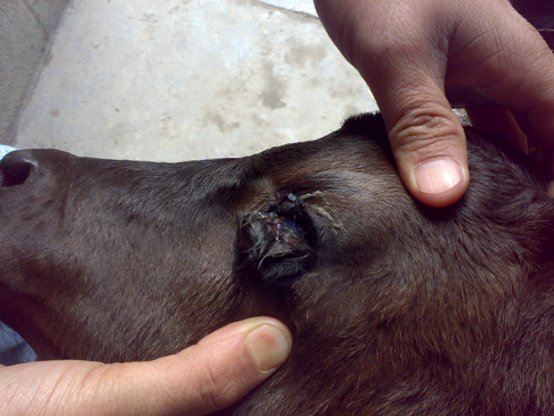
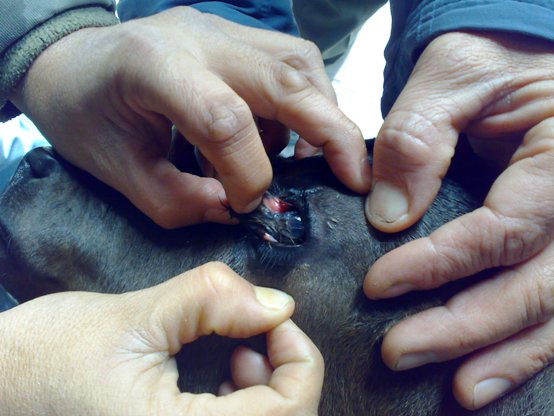
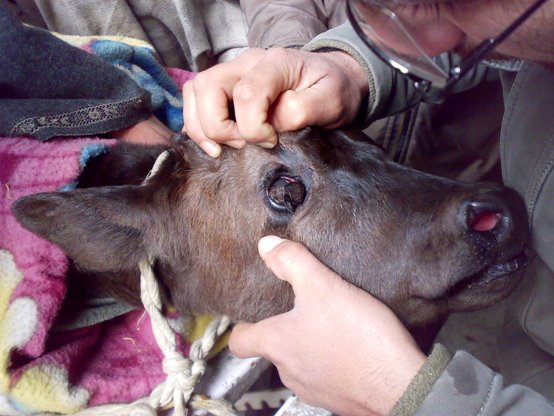
Sutures were placed through the tissue buldge and later the tissue excised.
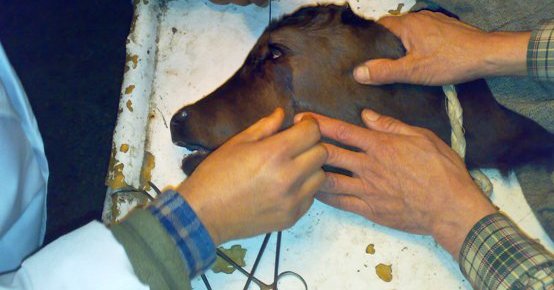
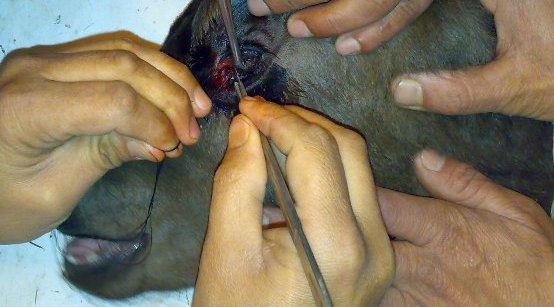
The upper layers of the skin are sliced through to promote fibrosis and prevent hair growth.
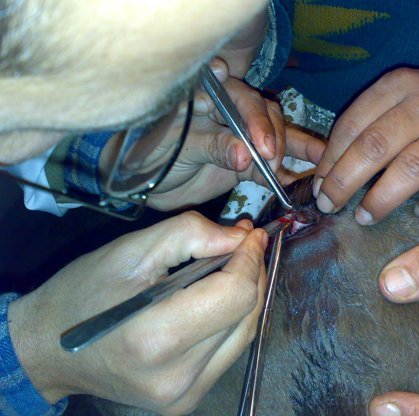
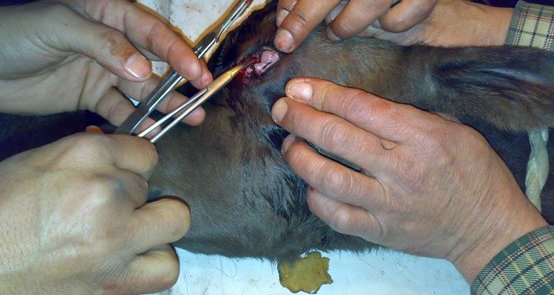
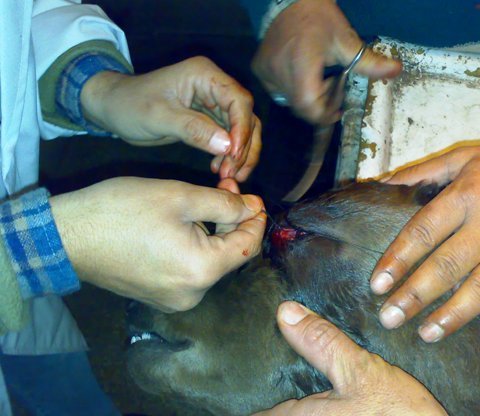
Finally an almost proper opening between eyelids
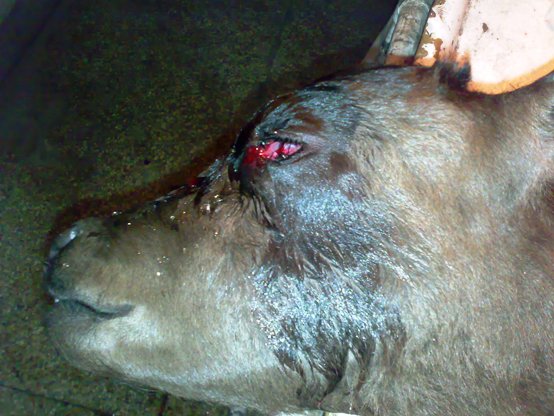
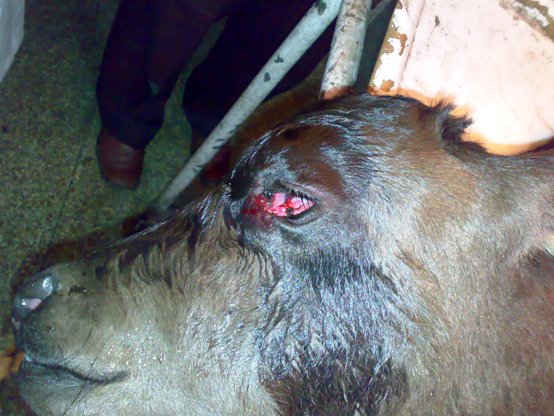
Posted in Pathological, Surgeries | 2 Comments »
Posted by Anjum Andrabi on 7th January 2009
This nanny goat was presented with acute inflammation of both the quarters. It was put on NSAID’s and a broad spectrum Cephalosporin. Udder secretions were sent for culture sensitivity testing.
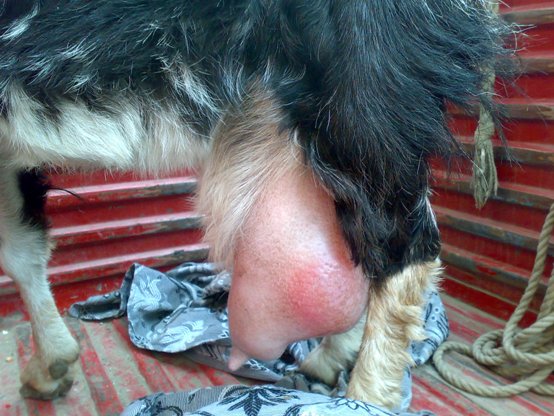
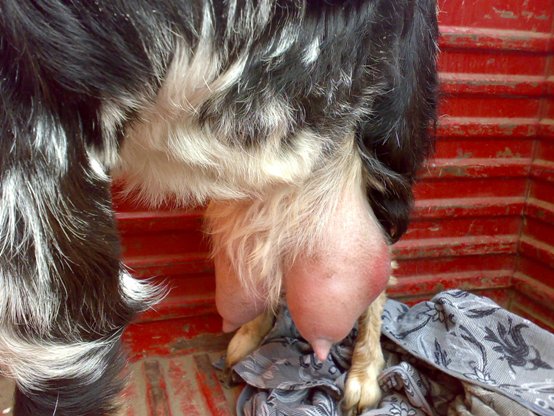
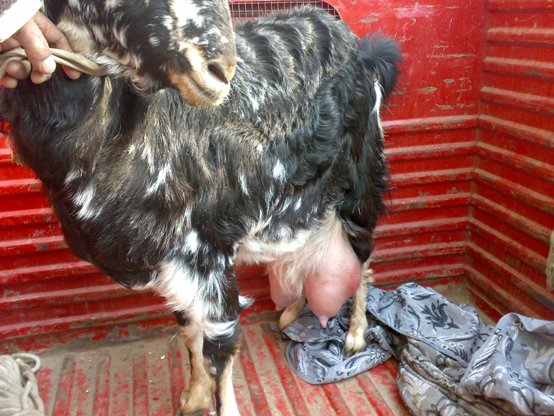
Posted in Pathological | 1 Comment »
Posted by Anjum Andrabi on 25th November 2008
Mummification happens when a fetus dies inside the uterus but the pregnancy is maintained. Thus the dead fetus is not expelled (which usually happens in 7-10 days after its death) and shrivels up. The pregnancy does not get terminated because either the dead fetus is one of a twin (the other being alive), which is rare or the persistence of the Corpus luteum of pregnancy in the mother. Fetal mummification is also seen sometimes in ewes and mares with twin fetuses.
Two types of mummification have been encountered in domestic animals; the hematic and the papyraceous type. While the former is seen only in cattle and is most commonly observed in the Channel Island breeds; the papyraceous type occurs in all species.
Genetic or chromosomal defects, torsion or compression of the umbilical cord, placental defects, infectious agents and abnormal hormonal concentrations are the usual suspect causes behind mummification.



Pic credits: Dr Khurshid Ahmad Shah
Posted in Pathological | 1 Comment »
















